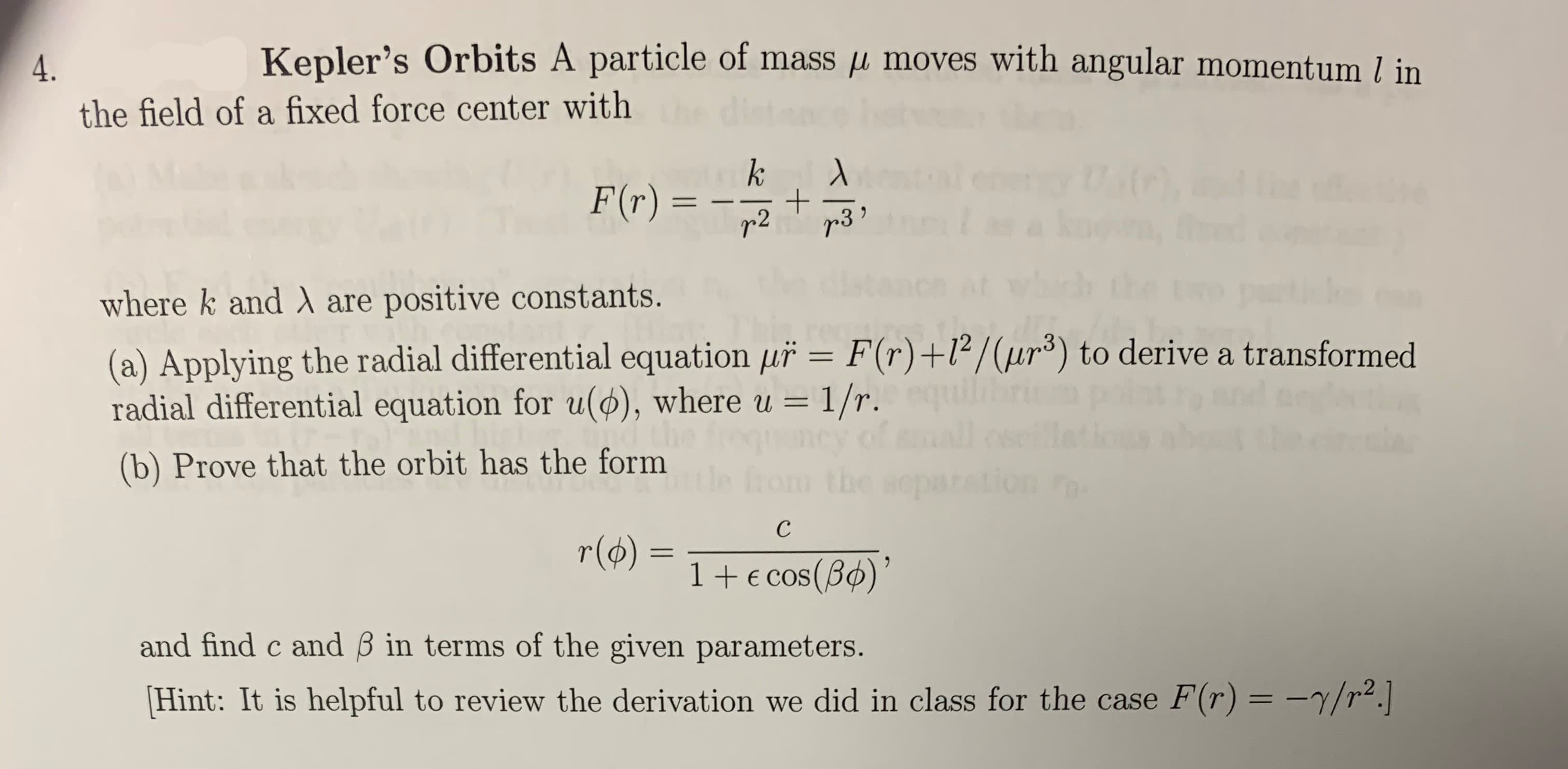Kepler's Orbits A particle of mass p moves with angular momentum l in the field of a fixed force center with k F(r) = + r3 r 2 where k and A are positive constants. (a) Applying the radial differential equation uř = F(r) +l2/(ur3) to derive a transformed radial differential equation for u(), where u = 1/r. (b) Prove that the orbit has the form tle from the separation с r(o) 1+E cos (B) and find c and B in terms of the given parameters. Hint: It is helpful to review the derivation we did in class for the case F(r) = -7/r2.
Kepler's Orbits A particle of mass p moves with angular momentum l in the field of a fixed force center with k F(r) = + r3 r 2 where k and A are positive constants. (a) Applying the radial differential equation uř = F(r) +l2/(ur3) to derive a transformed radial differential equation for u(), where u = 1/r. (b) Prove that the orbit has the form tle from the separation с r(o) 1+E cos (B) and find c and B in terms of the given parameters. Hint: It is helpful to review the derivation we did in class for the case F(r) = -7/r2.
Related questions
Question

Transcribed Image Text:Kepler's Orbits A particle of mass p moves with angular momentum l in
the field of a fixed force center with
k
F(r) =
+
r3
r 2
where k and A are positive constants.
(a) Applying the radial differential equation uř = F(r) +l2/(ur3) to derive a transformed
radial differential equation for u(), where u = 1/r.
(b) Prove that the orbit has the form
tle from the separation
с
r(o)
1+E cos (B)
and find c and B in terms of the given parameters.
Hint: It is helpful to review the derivation we did in class for the case F(r) = -7/r2.
Expert Solution
Trending now
This is a popular solution!
Step by step
Solved in 9 steps with 8 images
